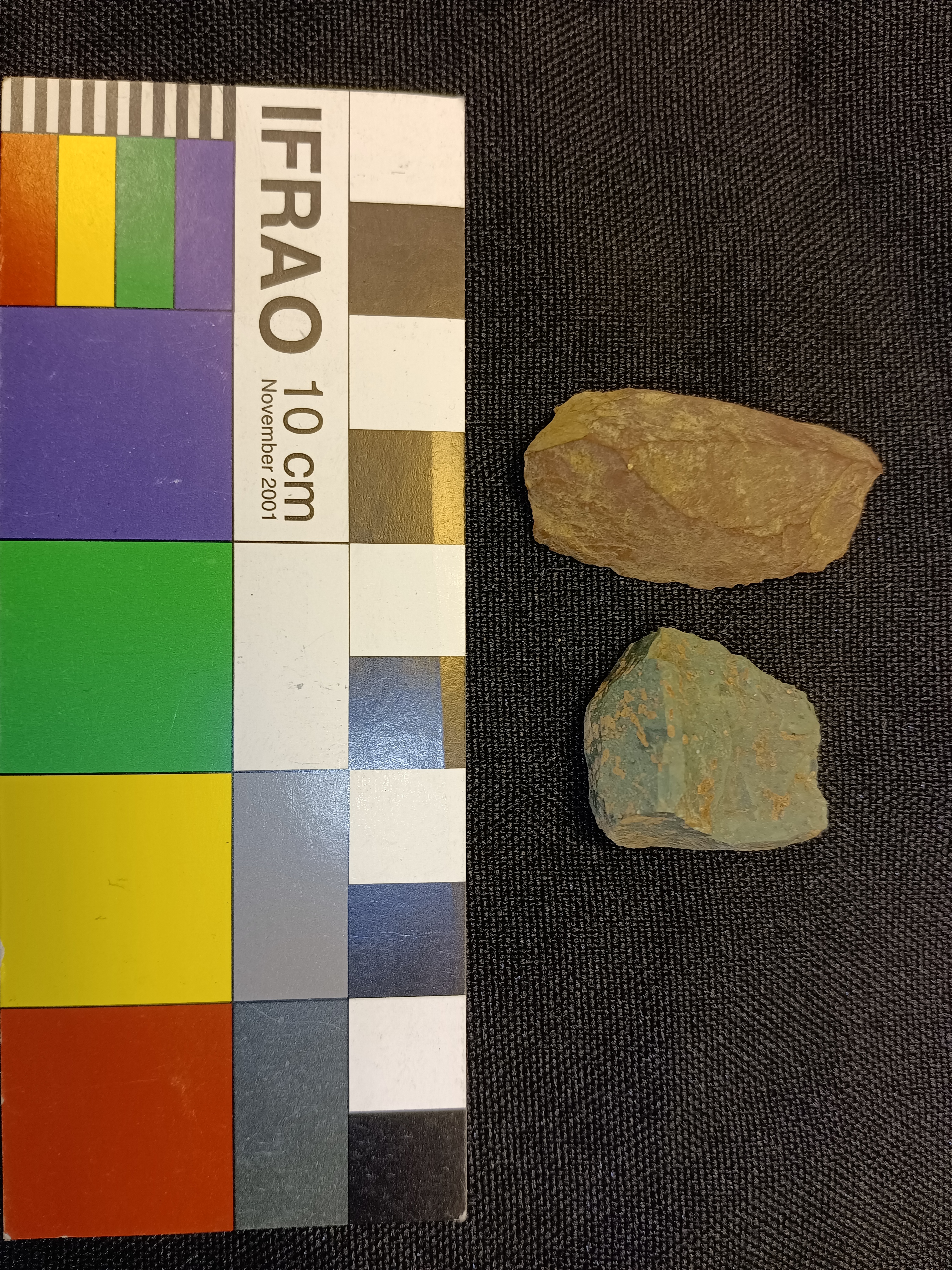- Home
- Publications
- PAGES Magazine
- Archaeological Evidence of Continuous Occupation of The Southwest Maputo Province, Mozambique
Archaeological evidence of continuous occupation of the Southwest Maputo Province, Mozambique
Décio Muianga
Past Global Changes Magazine
31(2)
115
2023
Décio Muianga1,2,3
Décio Muianga, an archaeologist from Mozambique, visited the University of Mpumalanga in Mbombela, South Africa, as a PAGES Inter Africa Mobility (IAM) Research Fellow. From 1 March to 3 April 2023, he analyzed lithic stone tools recovered from the excavation at Daimane site in southern Mozambique and compared these with stone tool collections from Mpumalanga province to better understand the technocomplexes, and dietary and subsistence changes that occurred during the Middle- and Late Stone Age.
Stone Age archaeological background in Mozambique
Mozambique is located in southeastern Africa and lies between two geographical areas, southern and eastern Africa, where the major developments of human evolution occurred during the Pleistocene and Holocene (Lombard et al. 2012; Mitchell 2012). Evidence of these cultural changes can be found at different sites throughout the country, particularly in southern Mozambique, which is rich in locations with lithics and ceramic remains (Kohtamäki and Badenhorst 2017; Menezes 1999; Muianga 2020; Saetersdal 2004). However, detailed and systematic studies of sequences with well-preserved deposits have not yet been performed. Thus, the Daimane site (Kohtamäki 2014) is a large and intact archaeological sequence that has not been systematically investigated and compared with many open-air sites from diverse chronological periods scattered across the landscape.
Aims of the project
The main objective of the lithic analysis at the University of Mpumalanga was to decipher the rich archaeological record of stone tools and artifacts, contributing to a deeper understanding of human prehistory in the region, and its relevance to the broader narrative of human evolution. The specific research questions whilst at the University of Mpumalanga were:
- What are the key lithic industries and typologies associated with the Middle Stone Age and Late Stone Age in the Lower Lebombo range in southern Mozambique?
- How can the archaeological sequence of the Stone Age deposits of the Daimane shelter, and the association with the surrounding open-air sites, contribute to the chronology of occupation in the area?
Answers to these questions will provide a better understanding of the different early inhabitants of the southeastern tip of Africa, and how the environment influenced the production and changes of the archaeological data recovered from excavations. They will also provide more evidence of lithic development analysis in southern Africa.
Research activities at University of Mpumalanga
The lithic analysis (including typological analysis and microscopic residue identification) of some of the stone artifacts recovered from the excavations in the Daimane II rock shelter was performed at the of University of Mpumalanga laboratory, and supervised by Dr Tim Forssman. These analyses, and comparisons of Stone Age tools (from Mozambique and South Africa), showed some similar typological features, as well as differences, in raw material selection by past hominids. The typological features, and the different technological complexes, were also documented with formal (stone tools used by hominids such as blades, scrapers, segments, etc) and informal (stone debris discarded during the production of formal instruments) tools identified, which correspond to different chronological periods of lithic production by hominids (Fig. 1). Besides the study of the artifacts described above, several sites in rock shelters in the Mpumalanga province were also visited, and large collections of lithics and rock paintings were analyzed for comparative purposes.
 |
|
Figure 1: Two lithic tools made out of jasper using the bipolar technique. Photo credit: Décio Muianga. |
Conclusions, outcomes and future plans
The PAGES-IAM Research Fellowship enabled the analyses of parts of the lithic collections from the Daimane II. Lithic analysis has revealed a progressive increase in technological complexity over time, from the Middle Stone Age to the Late Stone Age. This is evident in the development of more refined tool forms, improved raw material procurement strategies, and enhanced manufacturing techniques. Another aspect the analysis revealed is the diversity of geological raw materials identified, not only in the excavated materials corresponding to the Middle-to-Late Stone Age transition, but also during the period of economy based on hunting and gathering, which continued until the 1800s in Mozambique and South Africa. Four publications about different aspects of the current research are currently in preparation, and they will be submitted to peer review journals.
The evidence of this complex process of occupation is well preserved in the archaeological deposits of the Daimane rock shelter. Thus, more chronological dating (e.g. radiocarbon, phytoliths, optically stimulated luminescence) and mineralogical analysis of the ceramics, and faunal remains analysis are underway. These results will bring forth a key contribution to understanding the long sequence of the Daimane site.
ACKNOWLEDGEMENTS
Many thanks to Dr. Tim Forssman and to all the staff members and students who made my stay enjoyable during the four weeks in the laboratory, and while visiting the sites in Mpumalanga.
affiliationS
1Department of Archaeology and Anthropology, University Eduardo Mondlane, Maputo, Mozambique
2Department of Archaeology and Ancient History, Uppsala University, Sweden
3Kaleidoscopio, Maputo, Mozambique
contact
Décio Muianga: decio.jose uem.mz
uem.mz
references
Kohtamäki M (2014) PhD Thesis, Uppsala University, 169 pp
Kohtamäki M, Badenhorst S (2017) South African Archaeo Bull 72: 80-90
Lombard M et al. (2012) South African Archaeo Bull 67: 123-144
Menezes MP (1999) PhD Thesis, The State University of New Jersey, 793 pp
Mitchell P (2012) South African J Sci 108 (11-12): 1-2
Muianga DJD (2020) Lesedi 23: 60-63
Saetersdal TW (2004) PhD Thesis, University of Bergen, 331 pp